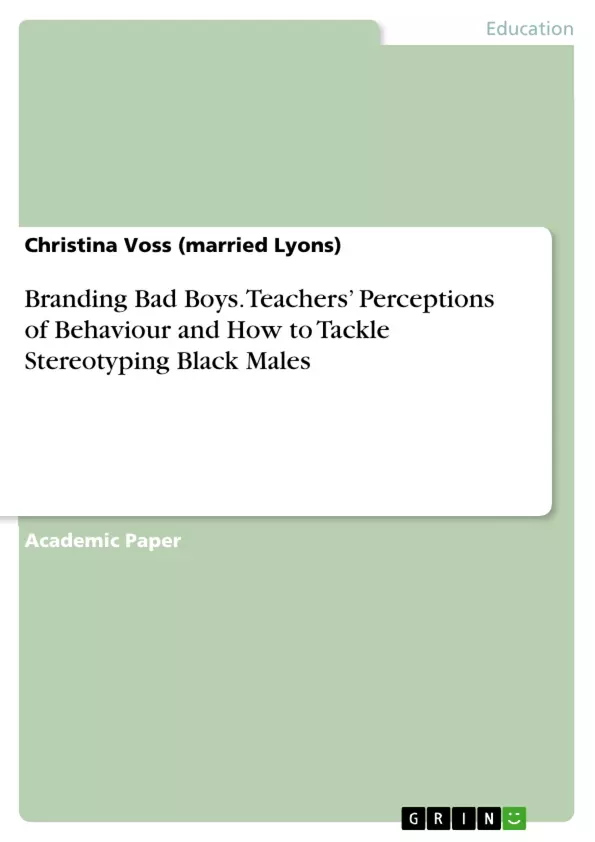Teachers’ attitudes towards black male students are still an under-discussed topic. But do we educators furnish them with equal learning opportunities as our white male students? Frankly, teachers of third track classes filled with black boys, can you claim for yourself never to use easy reader texts for your audience while providing the same literature in its original, sophisticated version to top track classes abundant with white students? In the following, let us explore current teachers’ perceptions of their black male students, in order to find ways for instructors to identify possible forms of stereotyping and labeling, and to make suggestions for a change in perspective for teaching a diverse classroom.
Inhaltsverzeichnis (Table of Contents)
- Branding Bad Boys: Teachers' Perceptions of Behavior and Brains of Black Males
- Impact on My Personal Teaching Strategies
Zielsetzung und Themenschwerpunkte (Objectives and Key Themes)
This text explores teachers' perceptions of Black male students and the impact of these perceptions on their educational experiences. It examines the prevalence of negative stereotypes and the "teaching less syndrome" that often affects Black boys in low-track classes. The text investigates the roots of these perceptions, including cultural factors, media portrayals, and institutional biases. It also analyzes the consequences of these perceptions, including higher rates of suspension and expulsion for Black males. The text concludes by discussing strategies for changing teachers' perspectives and creating more inclusive and equitable learning environments for all students.
- Teacher Perceptions of Black Male Students
- The Impact of Stereotypes and Labeling
- Institutional Bias and the "Teaching Less Syndrome"
- Consequences of Negative Perceptions on Educational Outcomes
- Strategies for Changing Teacher Perspectives and Promoting Inclusivity
Zusammenfassung der Kapitel (Chapter Summaries)
- Branding Bad Boys: Teachers' Perceptions of Behavior and Brains of Black Males: This chapter introduces the problem of negative perceptions of Black male students by exploring common stereotypes and the "teaching less syndrome." It examines how these perceptions can impact educational opportunities and outcomes for Black boys.
- Impact on My Personal Teaching Strategies: This chapter shares the author's personal experiences and observations as a teacher, reflecting on how they have encountered and challenged negative perceptions of Black male students. It highlights the need for teachers to be aware of their own biases and to implement strategies that promote inclusive and equitable learning environments.
Schlüsselwörter (Keywords)
This text focuses on the key themes of teacher perceptions, Black male students, educational equity, stereotypes, labeling, the "teaching less syndrome," institutional bias, and inclusive teaching practices. It explores the impact of these factors on the educational experiences and outcomes of Black boys, advocating for a more nuanced understanding of their experiences and a commitment to creating equitable learning environments.
- Quote paper
- Dr. Christina Voss (married Lyons) (Author), 2007, Branding Bad Boys. Teachers’ Perceptions of Behaviour and How to Tackle Stereotyping Black Males, Munich, GRIN Verlag, https://www.grin.com/document/1132811



